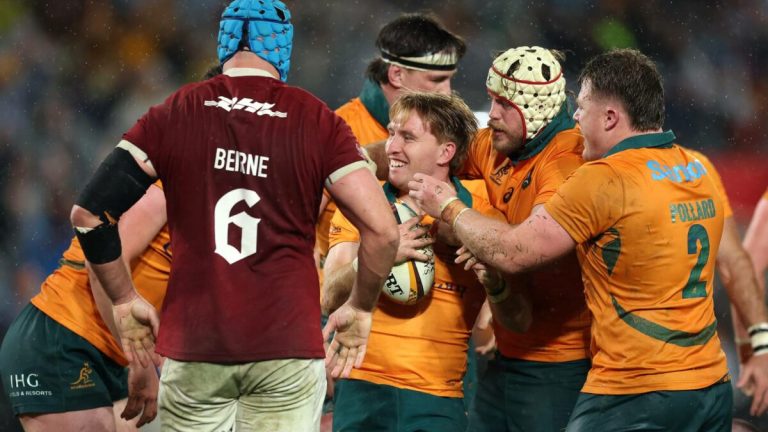In late 2021, Tim Paine, the man who was tapped on the shoulder to guide Australia through a post-Sandpaper world, resigned the Test captaincy. The circumstances of his resignation are immaterial for today’s purposes, because what it did usher in was the start of the Cummins Era.
Pat Cummins was 28 years old, at the peak of his powers and the golden child of Aussie cricket. Finally, it was time for the players who do the real work, not showy batsmen, to take charge. The team was fresh off a T20 World Cup victory, Coach Langer had promised to reign the intensity in, and the Old Enemy was coming down for their quad-annual flogging.
The line up in that first Test is surprisingly familiar:
Warner
Harris
Labuschagne
Smith
Head
Green
Carey
Cummins
Starc
Lyon
Hazlewood
It’s fair to say that beyond the openers, this is probably the line up that should have been together through the last four years. By series end, Khawaja had taken his spot at the top of the list and Harris was doomed to never play again.

(Photo by Robert Cianflone/Getty Images)
The Cummins Era has been one of genuine dominance. The man himself has led Australia in 34 Tests, winning 20, losing only 8 and drawing just 5. A 58.8% win rate is outstanding; Paine’s was just 47.8%, Steve Smith’s is 57%, Michael Clarke’s was 51%. If we go back in time a bit, Ian Chappell’s was only 50% (though 10 draws from 30 games meant he never lost a series).
If you look deeper into the results during this era, it makes even better reading for this team. Smith has stood in as captain six times since Cummins took over and has won 5 of those games, with the other being a draw. At the time Smith resigned in 2018, his actual win ratio was only 52.9%. Since the start of the 2021 Ashes, Australia has won 25 of 40 Tests, a 62.5% win ratio. This team’s dominance is clear. To give it complete context, we only won 50.5% Tests between Ponting standing down as captain and Cummins being appointed.
But it’s not just the frequency of the wins. Since taking over, they’ve won in Pakistan, New Zealand and Sri Lanka. They’ve also drawn in England and Sri Lanka. In fact, they’ve only lost a single series at all, once on the road to India in 2023. They got their revenge when they secured the WTC in 2023. Again, to provide context, Clarke lost series to South Africa (home and away), Pakistan, India, England and drew at home against New Zealand. Smith lost to Sri Lanka, South Africa, India and drew with Bangladesh. Paine lost to South Africa, Pakistan and India in his shortish reign. There was a lot of losing across that long decade.
Of course Pat’s a busy man and in addition to taking on the test leadership, he has also taken over the ODI team. It’s not the format it once was, but to disappoint a billion people and win a World Cup in India, against India, is one of the great victories in cricket history.
Like all champions, the team refused to rest on their achievements. The victories have continued and importantly, the back-monkeys have been released; after a long decade India has finally been beaten in a Test series. To describe the trophy cabinet as full is an understatement.
So finally, we come to the ultimate question; is the Cummins Team “great”? This purely subjective debate is of course silly. But it’s winter and silly, inane conversations are a Test cricket fan’s favourite past time.
The first step is agreeing on what is a ‘team’. Ricky Ponting has a formidable record, but the team he led for the first time did not, in anyway, resemble the team he led at the end. So, if we were to talk about a team led by Ponting, I think we’d have to look at it as the team he took over in 2004, up until Gilchrist’s retirement in 2008. Ponting had an odd start to his captaincy career, after clean sweeping Sri Lanka in Sri Lanka, he missed the first test against them at home (which we won), before coming back to lead in a draw. He then missed the wins in India, before coming back to lead in a loss. He would go on to lose the Ashes in England in 2005, but would ‘right the ship’ with a massive winning streak, starting in December 2005 and ending only in January 2008. 31 wins in 41 tests (75%) during this period, surely the bench mark? The side itself started with conquering the Moon (or India), but suffered the first of string of losses in England. The core this team involves all time greats in Ponting himself, Gilchrist, Warne, McGrath, Lee, Hayden, Langer and Martyn.
Another all time best team was that led by Waugh. His reign was short enough for the players under him to be considered a ‘team’, with only his brother being the only significant retirement during the middle of the run. The line up was otherwise pretty consistent; Langer, Hayden, Waugh, Ponting, Gilchrist, Warne, McGrath and Gillespie. The win ratio of 72% is outstanding. The blip of course was the failure to win in India, despite being oh-so-close.
I would note that both teams featured World Cup triumphs.
And so, what are we left with? Clearly this side is not as good as either Ponting or Waugh’s. Only Smith, and probably Cummins, will be remembered in the same breadth as Warne, McGrath, Ponting and Waugh. The failure to win in either England or India goes against this Era, while the win ratio is impressive, but not to the same degree as those previous sides.
Cricket is a cruel game, if things had been just a little different, and the Ashes had been won in England, perhaps this debate would be settled. But equally, even a slight change of fortune and Australia might have lost the 2023 Ashes and we then we wouldn’t even be having this debate.
I will end with this thought; sustained success is rare. Australia’s golden decade, like the Windies side who preceded them, was unusual. Greg Chappell inherited a good team from his brother and for about two years he enjoyed success, beating the Windies, Pakistan and New Zealand. But the wheels fell off, a bad loss in England in ’77, WSC followed with Simpson, Yallop and Hughes doing plenty of losing in those years. But even Chappell’s return didn’t herald a new golden age, loss to the Windies post-WSC, drawn series at home against India and of course he refused to tour, leaving Hughes to be beaten in England and Pakistan.
Returning to more modern times, the team who arguably toppled Australia in the late 2000s, South Africa, was a very good side, but they didn’t dominate for anywhere near as long as Australia did. They seemed to have climbed to the top of the mountain in 2008-09, only to lose the home series to Australia in 2009. They would go on to draw against England at home the next summer and draw in India, before drawing again against India, but this time at home. They would lose again at home in 2013 to Australia, despite winning consistently in Australia over a decade. It was a formidable record for over a decade, but it wasn’t dominance. When India finally won in Australia in 2018-19, it seemed to herald a potential decade of dominance by the powerhouse side. But there were losses in New Zealand, a failure to win in England and a defeat against South Africa which brought Kohli’s captaincy to a close just three years later. A very good team, but not ‘great’.
So what do we think Roarers, is the Cummins Team one of our genuinely great teams?






